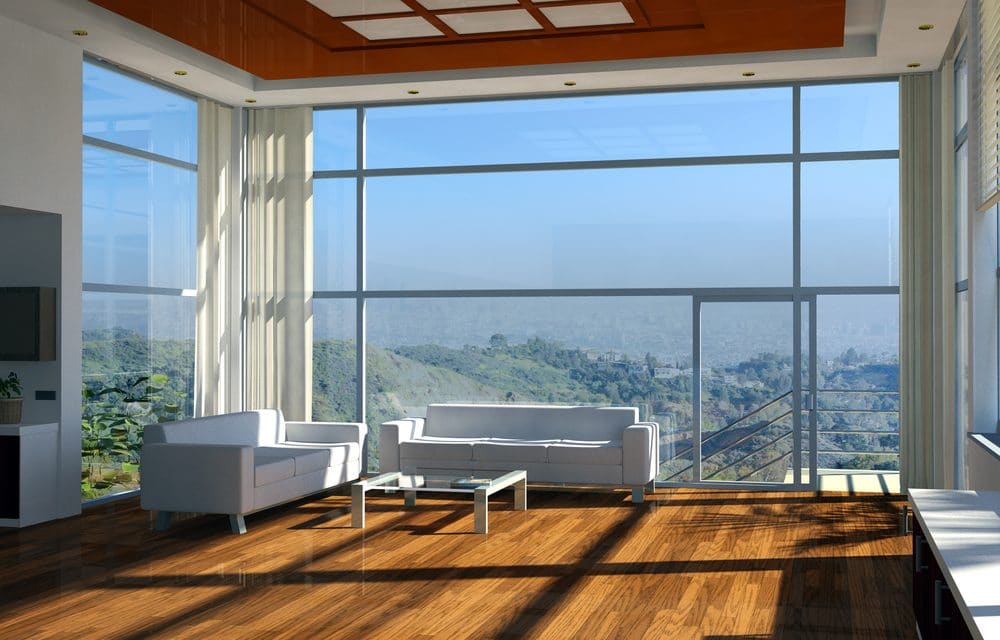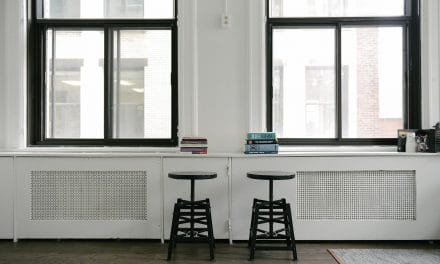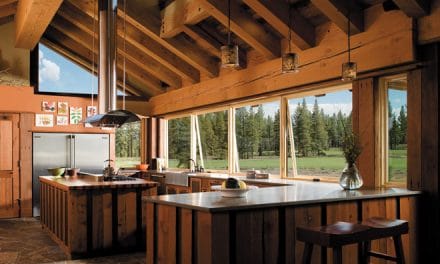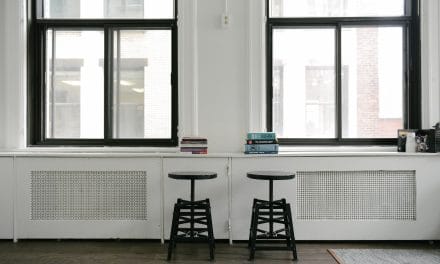
Before that, let’s go over a pro term…
Window glazing
Glazing refers to the actual glass part of a window. I always thought glazing meant the type of coatings that were put on the glass, but that’s not right. The glazing is the glass. So, when you hear the term double glazed windows, that means double paned windows— windows with 2 panes of glass. Triple-glazed windows have 3 panes of glass. And the act of replacing glass is known as “reglazing.
Moving onto the mini lesson.
Let’s start the mini lesson with a pop quiz. What is U value? We’ve talked about U value several times, including in last week’s lesson. U value is also called U-factor. It indicates the insulating value of windows and doors. U-value is the measure of unwanted, unobstructed heat flow. The lower the U-value, the better job a window does at keeping heat out in the summer and keeping the cold out in the winter. So, a low U-value is important in all climates.
In hot climates, not only should you choose a window with a low U-value, but perhaps more importantly, you should buy windows with a low solar heat gain coefficient (SHGC). The solar heat gain coefficient measures how well a window blocks heat transfer from sunlight. The lower a window’s solar heat gain coefficient, the less heat it transmits. So, in hot climates, the lower the solar heat gain coefficient, the better. You’ll want a higher solar heat gain coefficient in cold climates.
Energy Star specifies what U-value and solar heat gain numbers you should be looking for depending on the region of the country your house will be located. Take a look at the link below for a summary chart of those Energy Star recommended numbers.
When shopping for windows, look for whole-unit U-values and solar heat gain coefficients, rather than those measured from the center-of-glass. Whole-unit numbers more accurately reflect the energy performance of the entire window unit.
Next, let’s cover Window Glazing.
Remember, the glazing refers to the actual glass part of the window. Although single glazed windows, also called single paned windows, are available, they have high U values (which is bad), so you’re better off choosing double, or maybe even triple glazed windows.
The initial cost of single glazed windows is less, but your energy bills will be significantly higher. Single pane windows have no insulation which means outside temperatures and outside noise will affect the inside of your home more easily. Plus, single pane windows may lower the value of your house, so they’re not a great choice for custom built homes.
With double or triple glazed windows, the sealed space between the panes of glass is filled with air or a special gas. Air, all by itself, acts as in insulator. But filling the space between the window panes with a special gas provides even better insulation.
Argon or krypton are non-toxic gasses that are often used between window panes as insulators. Those gasses are denser than air so they slow the transfer of heat, making a house more energy efficient. Combined with a low-E glass coating, argon and krypton work to improve the window’s overall U value. We’ll talk about the low-E coating in just a moment.
Argon and krypton won’t usually work at high altitudes because they usually leak out. Krypton insulates a little better than argon, but krypton is also more expensive, so most window manufacturers use argon between their panes of glass.Adding a
Adding a low-E film to windows increases the price of the window by up to 10%.
Triple-glazed windows have 3 layers of glass and 2 layers of air or gas insulation. Energy savings with triple glazed windows are even greater than the savings you’d get with double glazed units, but make sure you’ll be in the house long enough to recover your investment in triple glazed windows.
It’s easier to justify the cost of triple pane windows in extremely cold climates or in areas with constant or very loud outdoor noise — like areas near airports or major streets or freeways.
Most high-performance windows today have glass coated with a low-E microscopic film. Low-E stands for low emissivity. Emissivity is the window’s ability to radiate or reflect, rather than absorb heat. In general, shiny, highly reflective materials have a low emissivity and dull, darkly colored materials have a high emissivity.
The low-E film is an extremely thin, transparent metallic substance. It’s thinner than a strand of hair, but it significantly improves the thermal performance of a window by stopping a lot of the sun’s heat and damaging ultraviolet rays.
Ultraviolet rays are the rays that cause furniture and flooring to fade. So the low-E coating not only makes your house more energy efficient, but it also protects your furniture and flooring. A slight tint is added by the low-E coating but doesn’t significantly decrease the amount of visible light that’s transmitted through the windows.
Low-E coatings should go on windows in all climates, but the coating is put on different window surfaces depending on whether you live in a warm or cold climate. On a double glazed window, the coating is applied to the outer glass in warmer climates. This reflects the sun’s heat back out, so the heat doesn’t have a chance to enter the house. And in colder climates, when heat tries to escape to the colder outside, the low-E coating reflects the heat back to the inside, reducing heat loss through the glass. Adding a low-E film to windows increases the price of the window by up to 10%.
A low-E film is not the only coating you can have added to your windows. There are also heat-absorbing tints and reflective coatings.
Glass treated with gray, green or bronze tints absorbs heat before it has a chance to enter the house. These tints reduce heat gain by absorbing as much as 45% of the incoming heat.
On double glazed windows, the outer layer of glass is usually tinted and the inner layer is usually clear. The primary purpose of the tint is to reduce solar heat gain. But, it also reduces the visible light entering the house when compared to clear glass.
Reducing heat gain with tinted windows is definitely beneficial in hot climates, but it is often a liability in cold climates. So, if you live in a cold climate, you’ll probably want to avoid bronze, green or gray tinted windows.
Another option in hot climates is REFLECTIVE COATINGS. The reflective film controls solar heat gain and reduces the passage of light. Before choosing a reflective coating, consider the visible reflectance value. The higher the visible reflectance value, the more like a mirror the window will look. Some homeowners association will not approve those mirror-like windows.
Reflective glass looks like a mirror on the side facing the light. So the windows look like mirrors on the inside of the house at night and during the day, the windows look like mirrors from the outside. So if you have a city view that you want to enjoy at night, a reflective coating is not the way to go.
REFLECTIVE WINDOWS
Finally, there are SPECTRALLY SELECTIVE COATINGS. Spectrally selective coatings are special types of Low-E coating. They filter out 40% to 70% of the heat while allowing the full amount of visible light to enter the window. These coatings help create a window with a low U-value and low SHGC but with high levels of light on the interior of the house.
Now that we’ve talked about the window glass and its coatings, let’s go over the materials used to make the window framework.
Frame materials include vinyl, aluminum, fiberglass, and wood or a combination of those. They each have different strengths.
VINYL
Vinyl is one the most popular materials used for windows. Vinyl windows are durable, budget friendly, and energy efficient. Vinyl is resistant to rotting and insect damage. Vinyl windows are lightweight and relatively easy to install.
The biggest downside to vinyl is its appearance. Most people think vinyl window look inexpensive. Plus, there are only a few color choices. Off-the-shelf vinyl windows are usually limited to white and tan. A few other colors may be available through special order.
The jury is out on whether vinyl windows can be painted. Some experts say it’s ok to use an epoxy-based exterior paint. Others say not to paint vinyl at all because paints don’t adhere well and the paint can crack over time.
Vinyl windows are good insulators and are easy to maintain, but they contract and expand with temperature changes, increasing the window’s air leakage. In areas of extreme heat, vinyl windows can get soft or sag a bit. This compromises the seal between the glass and the frame, causing the window to become less energy efficient.
ALUMINUM
Aluminum window frames are lightweight, strong, and durable. Aluminum frames are available in factory-baked enamel finishes which make them very low-maintenance. While aluminum is a less expensive window option, it is also less energy efficient than other windows. If you have aluminum windows installed in your house, you may feel the outside heat or cold when you are near your windows. Another drawback is that while they can be painted, painted aluminum doesn’t look as nice as painted wood or fiberglass.
In cold climates, a simple, non-insulated aluminum frame can easily become cold enough cause condensation or frost on the inside surfaces of window frames. So, if you do decide on aluminum windows, look for an insulated model with a thermal break for greater energy efficiency.
Also look for a model with a higher condensation resistance value. The Condensation resistance value indicates how well a window resists the formation of inside condensation. The larger the condensation resistance number, the better a product is able to resist condensation.
FIBERGLASS
Fiberglass is a relative newcomer to the window industry. Fiberglass windows are some of the most energy efficient, low maintenance and durable windows on the market. They do not warp, shrink, swell, crack, rot or corrode. And they are strong enough to hold large expensive pieces of glass.
Fiberglass windows are typically more expensive than aluminum or vinyl. In fact, a fiberglass window is about double the price of a comparable vinyl window.
Fiberglass windows are manufactured in limited colors, but they can be painted and the fiberglass surface takes paint well. Some brands come in a finish that looks like wood.
Manufacturers sometimes fill the hollow fiberglass frames with foam insulation to enhance the product’s energy efficiency.
Last, but not least is WOOD.
Although wood was one of the first materials used to make windows, wood windows are still a wise choice for many homeowners. Wood is a good insulator and wood windows have lower U values than many other options. Wood windows are also less prone to condensation. Modern weather-stripping make drafty wood windows a thing of the past. Wood can be painted or stained with beautiful results.
Wood windows have a classic look, but they’re affected by moisture changes and need regular maintenance. You’ll need to inspect your wood windows every year for signs of wear and deterioration and be prepared to repair any cracks and replace caulk and paint.
Some wood windows feature aluminum or vinyl cladding on the exterior, which reduces the amount of maintenance required.
Compared to other choices, wood windows aren’t as durable, and they’re susceptible to rot and insect damage. In addition, they are an expensive option.
So in summary,
- Vinyl and aluminum are the less expensive options and fiberglass and wood are the more expensive options.
- Vinyl, aluminum, and fiberglass are low maintenance, but wood requires regular maintenance.
- Vinyl windows are durable and pretty energy efficient, but they can look inexpensive and most people say you shouldn’t paint them. Vinyl windows are not the best choice for very hot climates because they can soften and sag.
- Aluminum windows are durable, but uninsulated models are not very energy efficient and they are prone to condensation. Look for insulated models with a thermal break.
- Fiberglass is a newer, durable, energy efficient material that takes paint well, but fiberglass is expensive.
- Wood windows are a classic favorite. Surprisingly, wood windows are fairly energy efficient, but they require regular maintenance, they’re prone to moisture and insect damage and they’re expensive.
- Different climates require different window materials and technologies for optimal performance. Be sure to check with the experts at your local window store, check Energy Star recommendations and/or consult with a home energy rater to determine the best window options for your home.
Alright, it’s quiz time…
QUIZ:
#1 True or False: A double glazed window, by definition, has 2 different special coatings on a single pane of glass.
That’s false. Glazing refers to the glass part of the windows, not the coatings on the glass. So a double glazed window is a double paned window. There are 2 panes of glass and those panes may or may not have coatings on them.
#2 Which are the two most inexpensive window options?
- Wood and fiberglass
- Fiberglass and vinyl
- Vinyl and Aluminum
- Wood and aluminum
The answer is C – vinyl and aluminum are the two most inexpensive, budget friendly window options. Wood and fiberglass are the two most expensive options.
Please remember that the purpose of this podcast is simply to educate and inform. It is not a substitute for professional advice. The information that you hear is based the only on the opinions, research, and experiences of my guests and myself. That information might be incomplete, it’s subject to change and it may not apply to your project. In addition, Building codes and requirements vary from region to region, so always consult a professional about specific recommendations for your home.
Thanks for spending part of your day with me. Come back next week for another episode of BYHYU.








